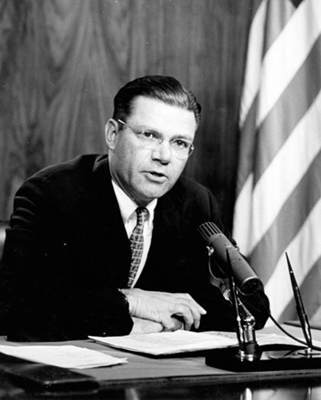Aftermath of the Gulf of Tonkin Incident
August 6, 1964

Secretary of Defense McNamara and Chairman of the Joint Chiefs of Staff Earle G. Wheeler brief key U.S. senators on the Gulf of Tonkin events, including the attack of August 2 and the alleged engagement of August 4. Though they are aware that the USS Maddox and USS Turner Joy were involved in secret DeSoto patrols and covert support of South Vietnamese raids on North Vietnamese facilities, they assure the senators that the attacks were unprovoked and that the U.S. Navy was in no way involved in or aware of any South Vietnamese activities in the area. They further state to the senators that the Maddox was simply on a routine patrol on August 2 and that the destroyer had been 30 miles from the coast, though the actual figure was between 14 and 18 miles.
In taped phone calls and conversations between Lyndon Johnson and administration personnel there are hints that the president has doubts about what actually happened in the Gulf of Tonkin on August 4, though in public he continues to speak of the attack on that date as a confirmed fact. Secretary of Defense McNamara also says that he is convinced that the attack happened, citing the radio intercepts, radar and sonar contacts, and some sailors’ reports of visual sightings as evidence in his briefings to congressional committees prior to Congress’s vote on the Tonkin Gulf Resolution.1